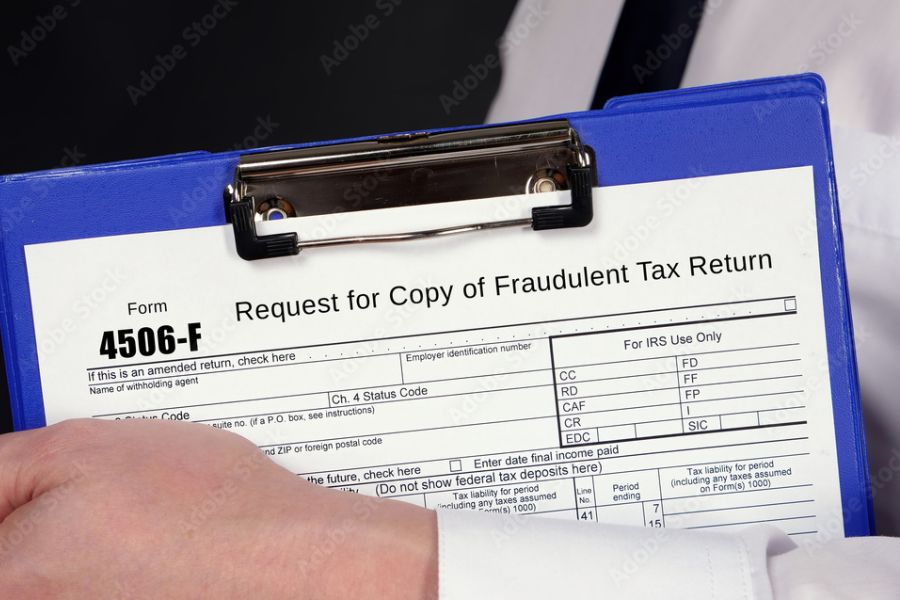In Fact Sheet 2022-25, the IRS has provided information about how taxpayers should handle non-tax and tax-related identity theft. When a taxpayer believes their personal information is being used to file fraudulent tax returns, they should submit a Form 14039, Identity Theft Affidavit, to the IRS. But in most cases, taxpayers do not need to complete this form. Only victims of tax-related identity theft should submit the Form 14039, and only if they haven't received certain letters from the IRS. All taxpayers can request an Identity Protection Personal Identification Number (IP PIN) using the Get An Identity Protection PIN (IP PIN) tool on IRS.gov to protect themselves from becoming a victim of tax-related identity theft. What is tax-related identity theft? Tax-related identity theft occurs when someone uses a taxpayer's...

Executives often receive lucrative compensation packages. But for some, it isn’t enough and they engage in illegal activities to line their own pockets. The Association of Certified Fraud Examiners (ACFE) has found that owners and executives commit 20% of occupational fraud. However, they’re responsible for the largest median loss of $600,000. (In comparison, rank-and-file employees who steal are responsible for a median loss of just $60,000.) Most organizations can’t afford such losses. Then there’s the risk of bad publicity, potential for lawsuits and demoralized employees and other stakeholders. To keep executive fraud from fleecing your company, you need to take aggressive measures to prevent it. And, if you discover fraud has already occurred, you must act quickly to contain it and hold the perpetrator responsible. Fraud triangle Some...
Keeping track of every IT asset — particularly as remote work has become common — is essential if your company wants to limit financial losses and fraud risk. According to some estimates, most remote employees use at least two employer-assigned devices, and a smaller percentage use three or more. In general, the more devices in use, the greater the potential for loss or theft. But you can keep tabs on hardware such as desktops, laptops, mobile phones, tablets and the software you’ve purchased or developed to operate them, with IT asset tracking. Following is a three-step guide. (1) List Your Assets The first step involves developing a list of the IT assets you need to track. Although third-party software can help simplify this task (especially if the software...
According to blockchain data company Chainalysis, cryptocurrency transactions associated with illegal activity topped $14 billion in 2021. That’s almost double 2020 numbers — and the momentum shows no signs of slowing. In addition to outright cryptocurrency theft, these crimes include investment fraud and ransomware scams that affect businesses. Yet cryptocurrency offers several advantages to entrepreneurs and established companies, including instant, low-fee transactions and access to new sources of capital. If you use cryptocurrency — or want to — understanding the risks can help prevent financial losses. The basics Cryptocurrencies use blockchain technology, a shared electronic ledger that records and stores transactions in the nodes of a computer network. Most cryptocurrencies use public blockchains, making it possible for anyone to see a digital wallet’s balance and transactions, including criminals....
Prevention is the heart of any fraud mitigation program. But sometimes even solid internal controls fail (because, for example, a manager overrides controls) and occupational fraud occurs. If you suspect an employee of stealing, you’ll want to do everything you can to ensure the perpetrator is caught. In most cases, you should hand a fraud investigation over to your attorney and a forensic accounting expert. But before these professionals arrive on the scene, you may need to collect and secure evidence. Paper evidence is generally easy Handling paper documents is relatively easy as long as you approach the task with care. Place any hard documents related to the possible fraud in a secure location. The fewer people who touch it, the better. Don’t make notes on paper documents....
Many employees — from retail workers to sales staffers involved in complex business-to-business transactions — receive part of their compensation from sales-related commissions. To attract and retain top talent, some companies even allow employees to earn unlimited commissions. Unfortunately, some commission-compensated employees may be tempted to abuse this system by falsifying sales or rates. Fraud methods vary depending on an unethical salesperson’s employer and role. But companies need to be aware of the possibility of commission fraud and take steps to prevent it. 3 forms Generally, commission fraud takes one of three forms: Invention of sales. A retail employee enters a fake purchase at the point of sale (POS) to generate a commission. Or an employee involved in selling business services creates a fraudulent sales contract. Overstatement of sales....
Companies of all sizes routinely outsource work to third-party contractors. Yet, each third-party hire comes with risk. Whether deliberate or unintentional, a third party’s actions can cost you money and harm your company’s reputation — particularly if they violate laws and regulations. Here’s how to contain possible threats. Potential problems Suppose your company employs an overseas trucking company to transport goods from a port to a customer’s warehouse. The driver could pay a kickback to customs personnel to release shipments quickly — potentially subjecting your business to bribery and corruption charges locally and in the United States. In another scenario, a third party might expose your company to excessive risk because it lacks a robust cybersecurity program and is easily hacked. This is what happened when Target Corporation...
The U.S. supply chain is overwhelmed and it’s expected to remain so for some time. With so many shipments tied up in ports and too few workers to watch them, cargo theft has become a significant problem. Yet theft from ports of entry isn’t the only way goods disappear. Criminals routinely target truck shipments as well. Cargo theft costs companies somewhere between $15 billion and $35 billion annually, according to the National Insurance Crime Bureau. To help prevent theft from hurting your company’s bottom line, protect your goods at every stage of their journey to customers. Contain cargo crime The fight against cargo theft starts when loading container ships. Make sure employees who handle your goods have passed criminal background checks. In addition to using secure locks, consider...
For years, banks, financial service and investment companies, and exporters have been required to follow know-your-customer (KYC) processes to thwart criminal activity. Developed to help certain businesses comply with anti-money laundering and anti-terrorism regulations, these programs aren’t mandated for most nonfinancial businesses. But you might want to consider adopting some KYC principles anyway. They can help you prevent fraud — including occupational fraud and identity theft — and even boost your marketing and sales efforts. Enhanced due diligence As part of their KYC processes, financial institutions generally verify customers’ names, addresses, and dates of birth and check them against lists of known criminals. In addition, they monitor transaction trends and high-risk accounts to determine their risk and whether they merit filing suspicious activity reports with the government....
Despite the business community’s rapid adoption of digital payment methods, some companies continue to rely on paper checks. But there’s a long-standing problem with checks: They make businesses vulnerable to several damaging types of fraud, including check kiting. Here’s how the scheme works. Riding the float In a check kiting scheme, the perpetrator takes advantage of the “float,” or the time between when a check is deposited and when the bank collects funds on the check. In essence, a bank that accepts check deposits and releases funds immediately provides account holders with interest-free loans. Some unethical businesses take advantage of this process. Although the total number of days it takes banks to process checks and collect funds has declined in recent years, there’s still opportunity to capitalize on...











